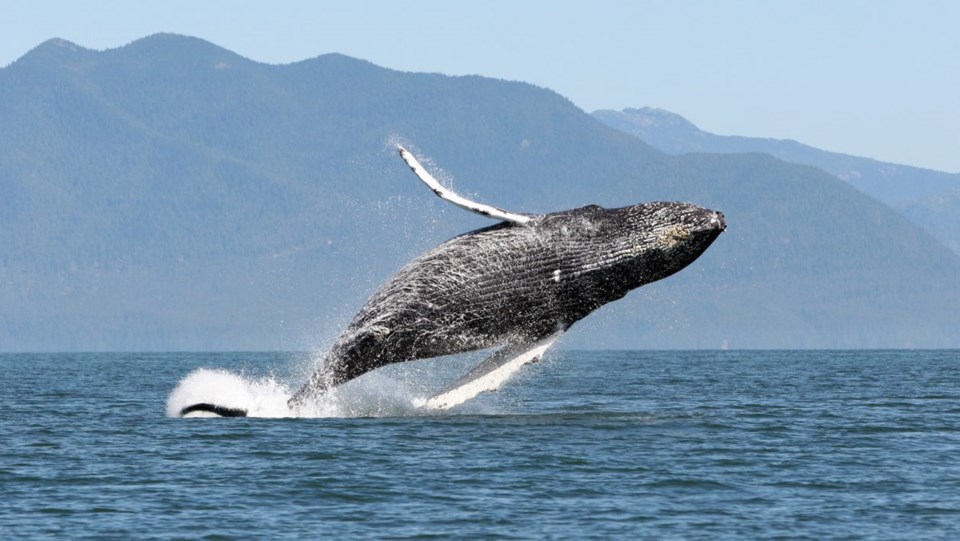OTTAWA ‚Äî The Harper government is downgrading the protection of the North 91‘≠¥¥ humpback whale despite objections from a clear majority of groups that were consulted.
Critics say the whales could face greater danger if two major oilsands pipeline projects get the go-ahead, since both would result in a sharp increase in movement of large vessels on the West Coast that occasionally collide with, and kill, whales like the humpback.
The decision was made under the Species At Risk Act, and declares the humpback a “species of special concern” rather than “threatened.”
The reclassification means the humpback will no longer be “subject to the general prohibitions set out in SARA, nor would its critical habitat be required to be legally protected under SARA,” states the federal government notice published this month in the Canada Gazette.
The decision removes a major legal hurdle that the environmental group Ecojustice said stood in the way of the $7.9-billion Northern Gateway pipeline project that would bring 550,000 barrels of diluted bitumen crude from Alberta to Kitimat.
Ecojustice said in December that a federal review panel’s conditional approval of the project flies in the face of the humpback’s protections under the federal legislation.
The fate of the humpback was a major issue during the Northern Gateway public hearings that concluded last year, with many groups fearing that collisions, potential spills, and excessive noise would be a serious threat to the whales.
The endangered species legislation declares that “no person shall destroy any part of the critical habitat of any … listed threatened species.”
The humpback was listed as threatened in 2005, based on a 2003 assessment by the Committee on the Status of Endangered Wildlife in Canada, an independent scientific advisory body for the federal government, which concluded its population was in the “low hundreds,” according to the Canada Gazette notice.
But that committee reversed its position in 2011, concluding that there had been no evidence of a population decline since the 1960s, when commercial whaling on the West Coast ended. It cited newer data that suggested the population had grown over several decades and totalled more than 18,000 non-calf whales.
The committee recommended a reclassification at that time, but a decision was delayed due to further scientific analysis prior to this month’s decision.
While no longer threatened, the species remained one of “special concern” due to a variety of potential and actual threats, including collisions with vessels that average about three incidents a year, according to research cited in the government notice.
The government sent out 312 consultation letters and got 22 responses back.
Only five were in favour of the new designation — a total made up of two unidentified B.C. government ministries, one tourism organization, one environmental non-government organization, and one “unknown source.”
Of the other 17, six environmental groups, three academics, two tourism industry organizations, one First Nations organization and a single “unknown source” were opposed. Another four — two academics, one First Nations, and another “unknown” — were undecided. In several instances, the undecided said insufficient information was available.
One environmental group questioned the committee’s advice.
“There are outstanding questions about the scientific reliability and sufficiency of the information [the committee] used to make the determination to down-list humpback whales,” said Chris Genovali, executive director of Raincoast Conservation Foundation.
“The proposed change in status for humpback whales would place them in jeopardy, particularly given the impending threats” posed by Northern Gateway and the proposed Kinder Morgan pipeline expansion to Burnaby, which would increase the number of arriving tankers from eight to 28 per month.
The humpback is among the largest marine animals and can grow to 14 metres in length and weigh up to 40 tonnes. The North 91‘≠¥¥ humpback‚Äôs range extends along the entire B.C. coast, including inshore inlets, all the way up to northern Alaska.
Northern Gateway proponents say that while the likelihood of whale strikes is “low,” there is no way to guarantee there will be no whale strikes along the route of the 250 huge tankers expected to enter and leave Kitimat annually.
Northern Gateway promised a number of measures to deal with the risk, including employing slower speeds and human and technical observers and monitoring, and promised to produce a risk-assessment report and “marine mammal protection plan.”
The federal review panel, in its favourable assessment of the project, noted in its findings that whales are “commonly observed” off the B.C. coast.



